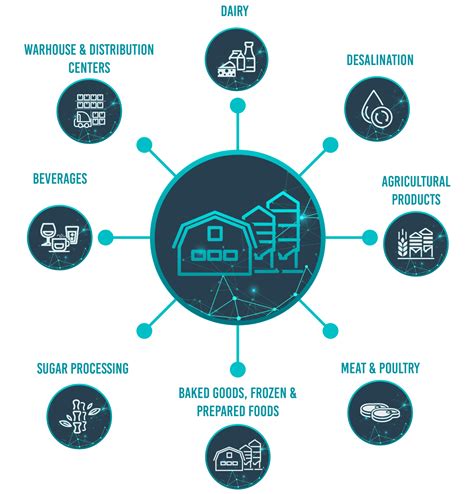A Complete Recipe: A Deep Dive into the Food and Beverage Industry Overview
The food and beverage (F&B) industry is a massive and multifaceted sector, encompassing everything from the cultivation of raw ingredients to the final sale and consumption of food and drinks. Understanding its intricacies is key for anyone looking to navigate this dynamic market, whether as a consumer, investor, or industry professional. This article provides a comprehensive overview, examining its key components, trends, and challenges.
The Diverse Landscape of Food and Beverage:
The F&B industry isn't a monolith. It's a vast ecosystem comprised of numerous segments, each with its own characteristics:
-
Food Production: This segment includes farming, fishing, livestock rearing, and food processing. It's the foundation upon which the entire industry rests, encompassing everything from basic ingredients to highly processed foods. Sustainability and ethical sourcing are becoming increasingly crucial aspects within this area.
-
Food Manufacturing: This covers the transformation of raw materials into consumable products. This involves complex processes, stringent quality control, and adherence to safety regulations. Large-scale manufacturing alongside smaller, artisan producers both contribute significantly to this segment.
-
Food Service: This expansive segment includes restaurants, cafes, catering services, and fast-food chains. Consumer preferences are a major driver in this area, influencing menu options and service styles. The rise of delivery services has radically altered this landscape in recent years.
-
Food Retail: This encompasses supermarkets, grocery stores, convenience stores, and online retailers. The battle for shelf space and consumer attention is fiercely competitive, requiring innovative marketing and supply chain strategies. E-commerce is revolutionizing food retail, offering consumers greater convenience and choice.
-
Beverage Production: Similar to food production, this covers the cultivation, processing, and distribution of alcoholic and non-alcoholic beverages. This segment includes breweries, wineries, distilleries, and soft drink manufacturers. Health and wellness trends are impacting this area significantly, with increasing demand for healthier alternatives.
Key Trends Shaping the Future of F&B:
The F&B industry is constantly evolving. Several key trends are reshaping its landscape:
-
Health and Wellness: Consumers are increasingly conscious of their health, leading to a surge in demand for organic, plant-based, and functional foods and beverages.
-
Sustainability: Environmental concerns are driving demand for sustainably sourced ingredients and eco-friendly packaging. Reducing food waste is also a significant focus.
-
Technology and Innovation: Automation, AI, and data analytics are transforming various aspects of the F&B industry, from production to marketing and distribution. Precision agriculture is improving efficiency and reducing environmental impact.
-
Globalization and Changing Demographics: The increasing interconnectedness of global markets is influencing consumer tastes and creating new opportunities for businesses. An aging population in some regions is also impacting demand patterns.
-
Personalization and Customization: Consumers increasingly expect personalized experiences, driving demand for customized food and beverage products and tailored services.
Challenges Faced by the Food and Beverage Industry:
Despite its vast size and potential, the F&B industry faces numerous challenges:
-
Supply Chain Disruptions: Global events and unforeseen circumstances can significantly disrupt supply chains, leading to shortages and price volatility.
-
Regulations and Compliance: The F&B industry is highly regulated, requiring businesses to navigate complex compliance requirements.
-
Competition and Market Saturation: The industry is highly competitive, with established players and new entrants vying for market share.
-
Labor Shortages: Many segments of the industry face significant labor shortages, impacting production and service delivery.
-
Economic Volatility: Global economic fluctuations can impact consumer spending and investment in the F&B sector.
Conclusion:
The food and beverage industry is a dynamic and complex sector with a significant impact on our lives. Understanding its diverse segments, key trends, and challenges is crucial for anyone involved in or interested in this essential industry. By adapting to changing consumer preferences, embracing technological innovation, and prioritizing sustainability, businesses can thrive in this ever-evolving landscape.
